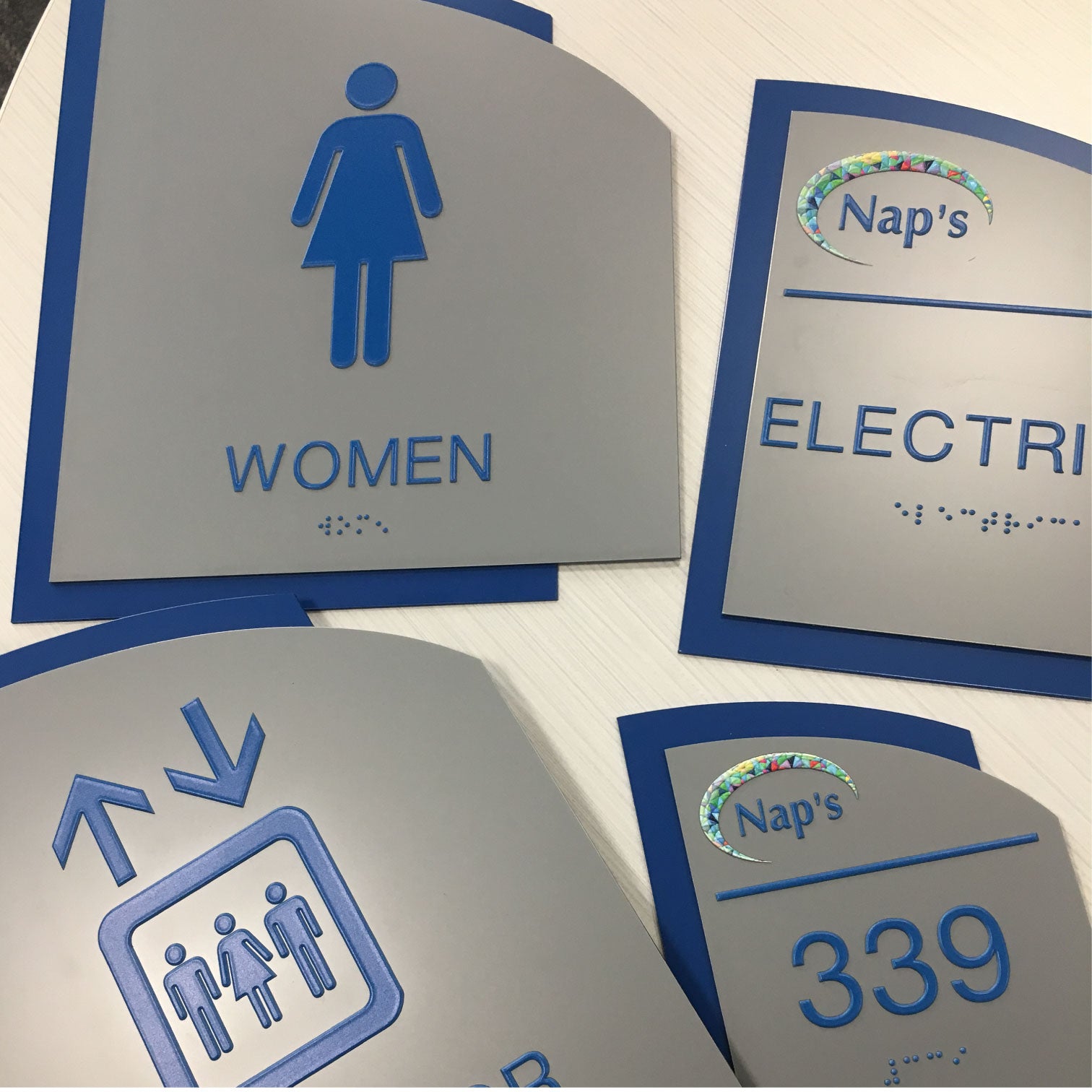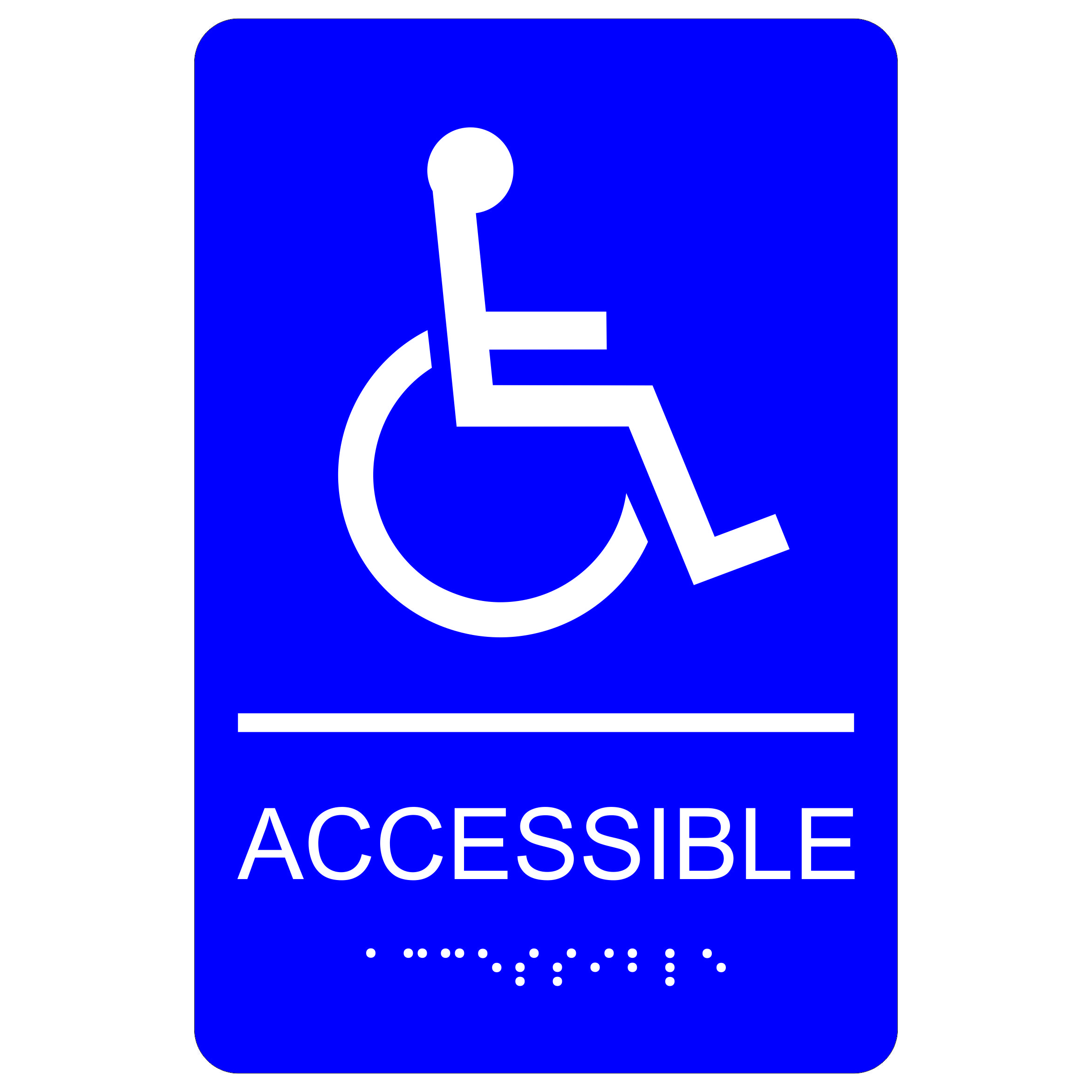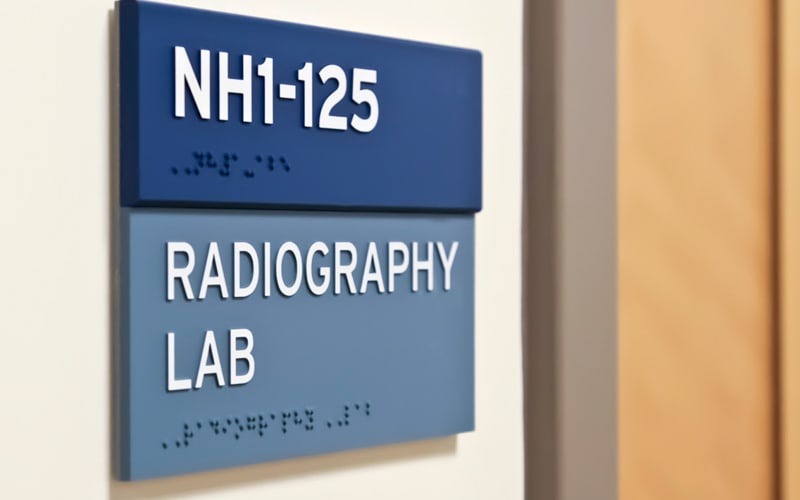Just How ADA Signs Boost Access for Everyone
Just How ADA Signs Boost Access for Everyone
Blog Article
Checking Out the Secret Features of ADA Indicators for Enhanced Access
In the world of access, ADA indicators serve as quiet yet effective allies, making certain that areas are comprehensive and accessible for people with handicaps. By integrating Braille and responsive aspects, these indicators damage barriers for the visually damaged, while high-contrast color systems and readable fonts satisfy varied aesthetic demands. Their critical positioning is not arbitrary yet rather a computed effort to promote seamless navigating. Past these features exists a deeper narrative about the advancement of inclusivity and the continuous commitment to producing equitable areas. What extra could these signs indicate in our pursuit of global access?
Importance of ADA Conformity
Making sure compliance with the Americans with Disabilities Act (ADA) is important for fostering inclusivity and equal gain access to in public areas and offices. The ADA, enacted in 1990, mandates that all public facilities, employers, and transportation solutions suit people with handicaps, ensuring they enjoy the very same legal rights and possibilities as others. Compliance with ADA criteria not just satisfies legal obligations however likewise improves a company's credibility by showing its dedication to variety and inclusivity.
One of the vital aspects of ADA conformity is the implementation of easily accessible signage. ADA signs are created to guarantee that people with handicaps can conveniently navigate through spaces and buildings.
Furthermore, sticking to ADA policies can minimize the threat of lawful effects and prospective penalties. Organizations that fail to comply with ADA guidelines might face fines or legal actions, which can be both monetarily difficult and harmful to their public image. Therefore, ADA compliance is indispensable to cultivating a fair setting for everybody.
Braille and Tactile Components
The unification of Braille and tactile elements into ADA signs embodies the principles of accessibility and inclusivity. These attributes are vital for individuals who are blind or aesthetically impaired, enabling them to browse public spaces with greater self-reliance and self-confidence. Braille, a responsive writing system, is essential in giving composed details in a style that can be conveniently viewed via touch. It is normally positioned under the matching message on signage to guarantee that individuals can access the information without aesthetic support.
Responsive elements extend past Braille and include increased personalities and icons. These components are designed to be noticeable by touch, permitting people to identify area numbers, bathrooms, exits, and various other essential locations. The ADA sets details standards relating to the dimension, spacing, and placement of these tactile components to maximize readability and make sure uniformity throughout various settings.

High-Contrast Color Pattern
High-contrast shade plans play a crucial duty in enhancing the presence and readability of ADA signs for individuals with aesthetic problems. These plans are necessary as they make best use of the distinction in light reflectance between message and background, making sure that signs are conveniently discernible, even from a range. The Americans with Disabilities Act over here (ADA) mandates using details shade contrasts to accommodate those with minimal vision, making it a vital aspect of compliance.
The efficiency of high-contrast shades depends on their ability to stand apart in numerous lights problems, consisting of dimly lit settings and areas with glow. Generally, dark message on a light history or light message on a dark background is employed to attain ideal comparison. As an example, black text on a yellow or white background offers a raw visual distinction that helps in quick recognition and comprehension.

Legible Fonts and Text Dimension
When thinking about the design of ADA signs, the choice of understandable typefaces and suitable text dimension can not be overemphasized. These aspects are critical for ensuring that indications are available to people with visual impairments. The Americans with Disabilities Act (ADA) mandates that font styles need to be not italic and sans-serif, oblique, manuscript, extremely attractive, or of unusual form. These needs aid make certain that the message is conveniently understandable from a distance and that the personalities are appreciable to diverse target markets.
According to ADA standards, the minimum message elevation must be 5/8 inch, and it ought to boost proportionally with watching distance. Consistency in text dimension adds to a natural aesthetic experience, assisting people in navigating atmospheres efficiently.
In addition, spacing between lines and letters is essential to readability. Ample spacing protects against characters from appearing crowded, improving readability. By sticking to these standards, designers can dramatically boost ease of access, making certain that signage offers its intended purpose for all individuals, despite their aesthetic capacities.
Effective Positioning Methods
Strategic placement of ADA signs is important for maximizing availability and making sure compliance with legal requirements. ADA guidelines state that indicators ought to be installed at an elevation in between 48 to 60 inches from the ground to ensure they are within the line of sight for both check this site out standing and seated this link people.
Furthermore, signs need to be positioned beside the latch side of doors to enable simple identification before access. This placement assists people situate rooms and rooms without blockage. In situations where there is no door, indicators need to be positioned on the nearest adjacent wall surface. Uniformity in sign positioning throughout a facility improves predictability, reducing complication and improving general user experience.

Final Thought
ADA indications play a crucial duty in promoting availability by integrating attributes that attend to the requirements of people with specials needs. These aspects collectively cultivate a comprehensive setting, underscoring the relevance of ADA compliance in making sure equal accessibility for all.
In the realm of accessibility, ADA indicators offer as silent yet effective allies, making certain that spaces are navigable and comprehensive for people with specials needs. The ADA, passed in 1990, mandates that all public facilities, companies, and transport services suit people with specials needs, ensuring they appreciate the exact same legal rights and possibilities as others. ADA Signs. ADA indications are developed to ensure that people with handicaps can conveniently browse via buildings and areas. ADA guidelines state that signs need to be placed at a height in between 48 to 60 inches from the ground to ensure they are within the line of sight for both standing and seated people.ADA signs play a vital role in promoting ease of access by incorporating attributes that resolve the demands of individuals with specials needs
Report this page